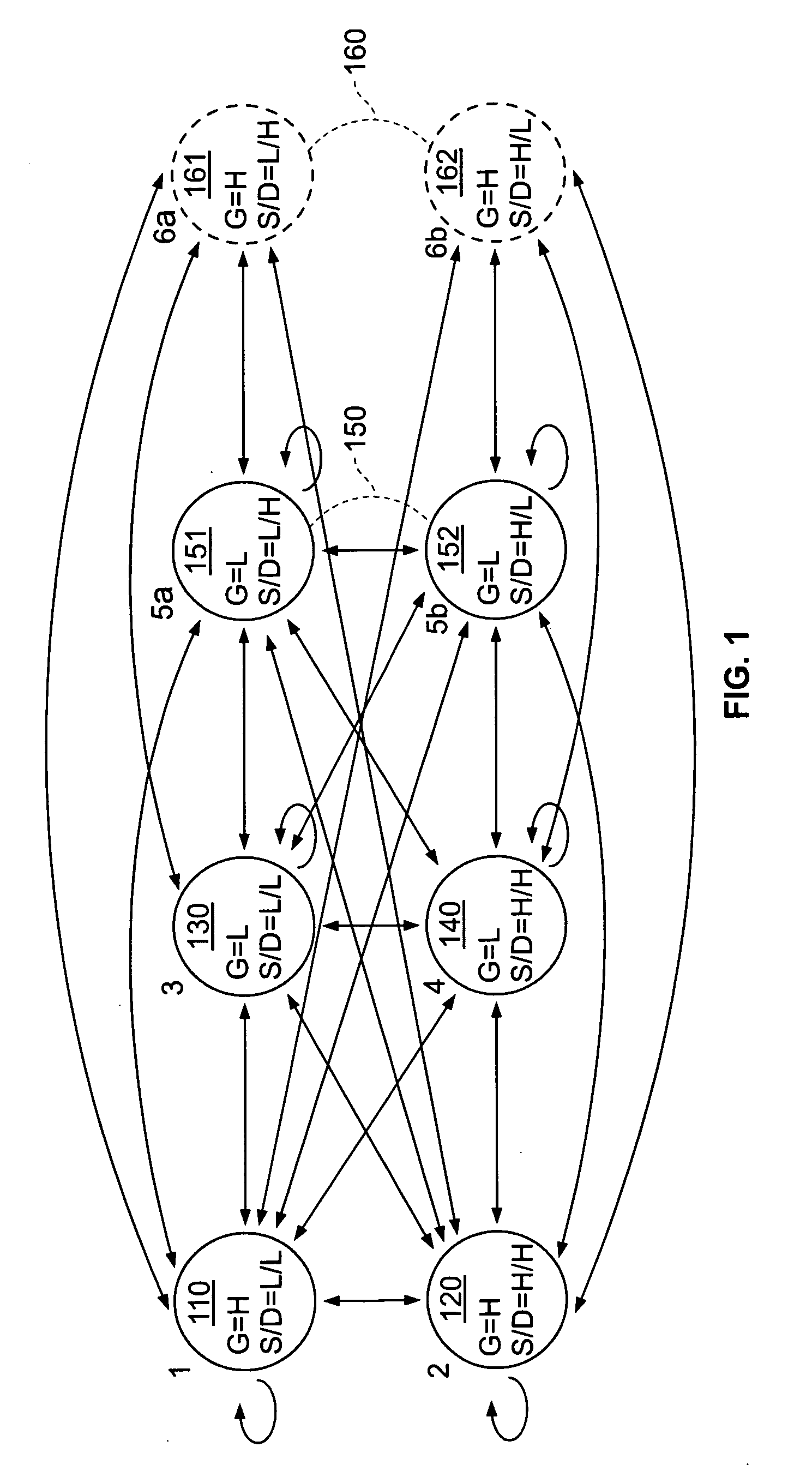Methods for estimating the body voltage of digital partially depleted silicon-on-insulator circuits
a technology of silicon-on-insulator circuit and body voltage, which is applied in the field of parts depleted silicon-on-insulator technology, can solve the problems of noise failure, floating body effect in pd-soi has posed and continues to pose major challenges, and fully-depleted devices have been largely abandoned in favor of partially-depleted technology, etc., and achieve accurate estimation of upper and lower bounds of body voltage.
- Summary
- Abstract
- Description
- Claims
- Application Information
AI Technical Summary
Benefits of technology
Problems solved by technology
Method used
Image
Examples
case 1
[0137]In Case 1, transistor M13 charges the internal node between transistors M1 and M2 to VDD every precharge phase. This configuration would be common in bulk CMOS to mitigate charge-sharing noise but is potentially disastrous for SOI since it can allow the body of M1 to easily charge to a very high bias, nearly 1 V. When brought into state 150 by the noise condition, M1 draws bipolar leakage current. The high body voltage also reduces the threshold voltage, making the FET more sensitive to the coupling noise on the gate.
case 3
[0138 is similar, but the fact that net E is under steady switching means that both states 120 and 140 are accessible for FET M5. State 2 accessibility limits the maximum body voltage possible to only about 0.75 V. In this case, the body voltage is not high enough to result in significant parasitic bipolar leakage but the threshold voltage is still reduced enough to result in functional failure.
[0139]In Case 2, transistor M14 discharges the internal node between transistors M3 and M4 every cycle. From the point of view of the modified accessibility analysis, this is equivalent to Case 4, in which both E and F are active. The conservative upper bound overestimates the body voltage. The main reason for this discrepancy is the neglect of state 160 which is exerting a downward pressure on the body voltage which is not (in the interests of conservatism) considered in the modified accessibility analysis.
PUM
 Login to View More
Login to View More Abstract
Description
Claims
Application Information
 Login to View More
Login to View More - Generate Ideas
- Intellectual Property
- Life Sciences
- Materials
- Tech Scout
- Unparalleled Data Quality
- Higher Quality Content
- 60% Fewer Hallucinations
Browse by: Latest US Patents, China's latest patents, Technical Efficacy Thesaurus, Application Domain, Technology Topic, Popular Technical Reports.
© 2025 PatSnap. All rights reserved.Legal|Privacy policy|Modern Slavery Act Transparency Statement|Sitemap|About US| Contact US: help@patsnap.com



